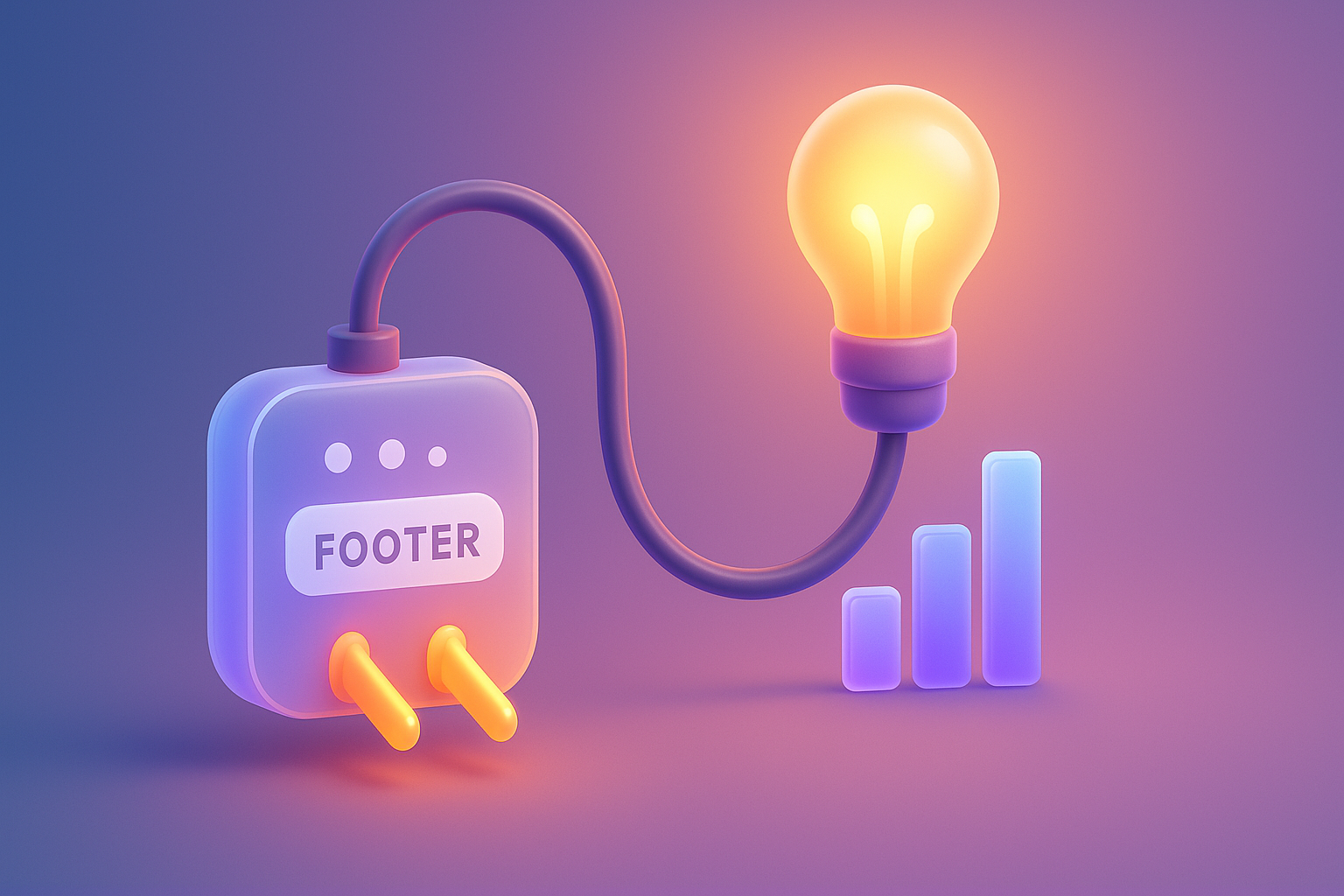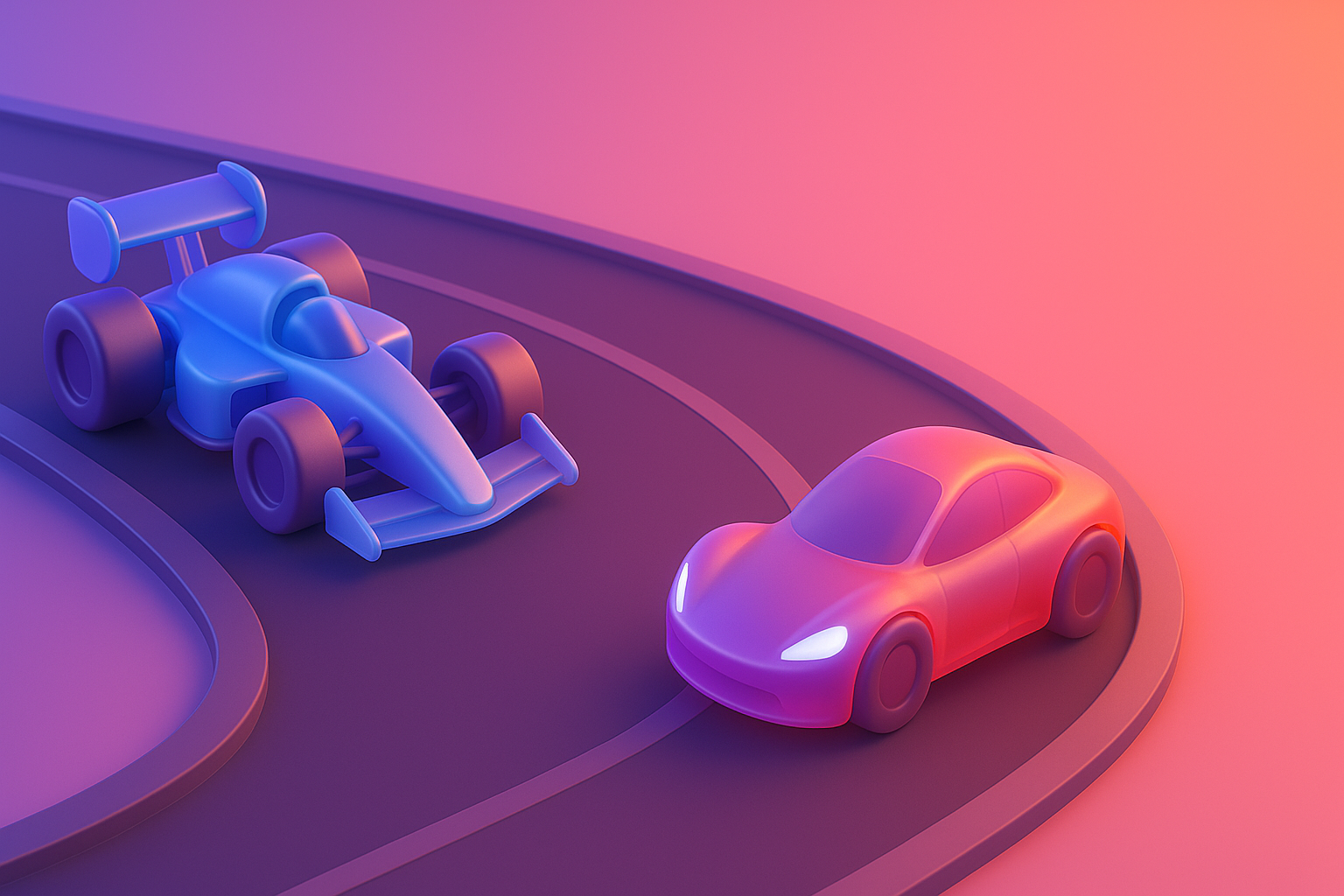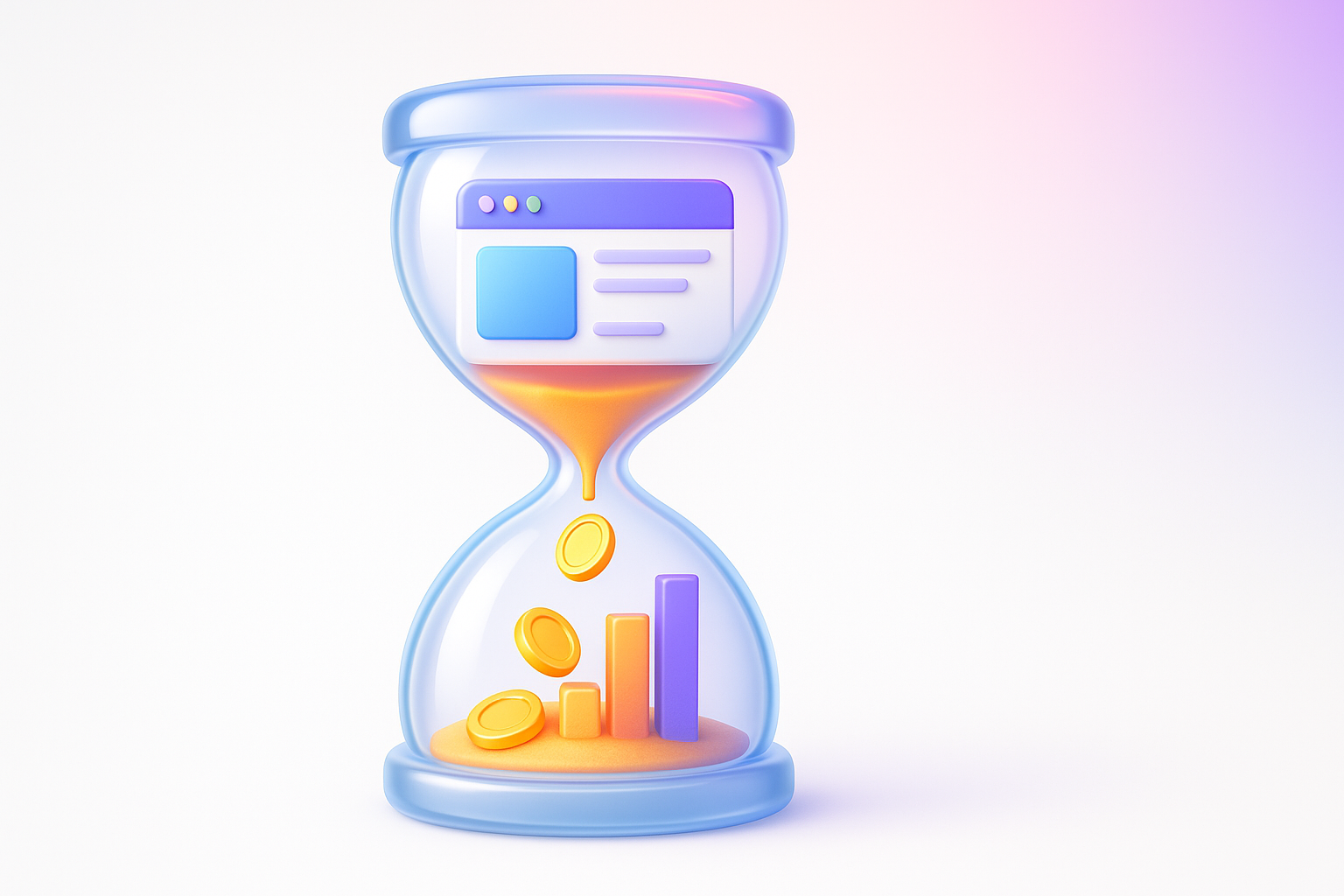How to design a website footer to be more "At the end of the web" but is "LEAD tool"

"Sliding the screen and where to go?" The Classic Footer's classic problem that causes you to lose customers without knowing it.
Have you ever felt like this? You are dedicated to both physical strength and designing the website beautifully. The content is interesting. But when the user scroll down to the end of the web Instead, they found a dead end ... just found a copyright message with a small logo. That can't do anything Finally, they closed your webpage unfortunately. This is a problem that is like a "blind spot" that many website owners and marketers often overlook. We call it "Dead-End Footer" or the end of the web that is not lively. Is just an area to tell according to tradition But does not act "navigation" or "creating opportunities" at all
Users who intend to scroll down to the end Is a group of people who are very interested in your brand! He may be looking for information, contacting, wanting to know what the company you have, or are looking for a signal that makes them feel more "confident", but when your Footer has nothing for him to continue. Equally, you are releasing "The good customer" to slip in front of the eyes This problem does not cause you to lose only traffic, but you are losing the opportunity to create a Lead and close the sale enormous.
-Prompt for illustrations-
Infographic style. The left comparison is a Footer image that is just a copyright with a small logo. And there is an arrow pointing out of the website with a question mark (?) Conveys the "dead end". The right side is a good Footer. With an arrow pointing to the Lead icon or the money to convey "Creating opportunities"
Why does the Website Footer become a "forgotten area" in the design?
The reason that Footer is often designed to be asked. There are many factors. Most often caused by misunderstanding that it is just "Secondary components" that are not as important as the head (Header) or the main content of the website. Let's see why this problem arises:
- Focusing too much at Above The Fold: Designers and marketers tend to devote all the energy to the first part that the user see (Above the Fold) because it is believed to be the most important part of attracting attention. Until forgetting that the user Journey or the user's path is not over
- See it as a space for legal information: Many people think that Footer is available to enter information that "It is necessary to have" according to the law only, such as Copyright, Privacy Policy, or Terms of Service.
- The old beliefs that "People do not scroll down": is a terrible belief! In an age that people are familiar with using social media Scrolling is a normal behavior. There is clear information that many users scroll down to the end to look for what they really want.
- Lack of understanding of user behavior: not analyzed that once the user read the content What do they want next? Do they look for information? Want to see other products? Or want to know more about the company? Not understanding these things makes us unable to design Footer to meet his needs.
Because these reasons, Footer became just the "end" of the website instead of the "door to the next opportunity", which changed the view and focus on it. Will help unlock the unbelievably hidden potential
-Prompt for illustrations-
Images of people designing websites on the computer By zooming to the beautiful Header section, but the Footer below is just a square, empty, gray color To convey the neglect
If releasing the Footer into a "dead end", it will have more serious consequences than expected.
Having an ineffective Footer is not just a matter of incomplete design. But it directly affects the business and SEO in the long run unexpectedly Imagine:
- Lower conversion rate: You lose the opportunity. "The last time" in changing the visitors who are interested to become a Lead or the customer who scrolled to this point is the person who is ready to "take action" but there is no CTA button or the channel for him to continue.
- User experience (UX) worse: When the user can't find the desired information, such as contact information or frequent question pages They will feel frustrated and see your website "difficult to use." This creates a bad impression. And may make them not come back again
- Bookce Rate may rise: even if they read the content until the end. But without a link to another page (Dead-End), it may end the session. Which may negatively affect SEO scores in the long run
- Affecting SEO (indirectly): Footer is an important area for placing the Internal Link to the main page of the website. Good internal links will help search engine understand the structure and importance of each page on your website better. If releasing this area empty Equivalent to you to miss the opportunity to do a good internal linking.
- Reduce trust (Trust): Footer is where people tend to look for "Trust signal" (Trust Signals), such as clear company information, logos, certified, or links to various policies. The lack of this information makes your brand look uncertain and unreliable. If wanting to strengthen credibility Try to study more from the article on The composition can create credibility on the organization website .
-Prompt for illustrations-
The graph that shows the reduced conversion rate and the higher bounce rate, with an empty Footer icon as a indicator in the middle of the graph.
Turn the Footer to "LEAD": Where should it start?
The good news is to change the Footer from the "dead end" to "the tool to create opportunities". The key is to think with strategies that we want the user to do next. And how can we facilitate him? This is a guideline and element that should be considered.
1. Start with the main goal (Define Your Goal): What do you want from Footer? Increase the application for the Newsletter? Stimulate people to contact? Or guide the bestseller? Having a clear goal will help you choose the correct element.
2. Strategic linking structure:
- Important links, but not the main menu: such as "about us" page, "work with us", "common questions (FAQ)", "blog". These links are important to build credibility and SEO.
- Service links or products: Provide service groups or main products So that interested users can easily access
- Help & Support: For example, "" Help Center "," How to order "," refund policy "
- Legal Links: It is indispensable to create transparency and reliability, such as "Privacy Policy" and "Terms of Service".
3. Put the power call-to-to -ction (CTA):
- This is the heart of creating Lead! Use CTA that is clear and the last opportunity to stimulate the action.
- Example: Newsletter Signup with a proposal "10% discount immediately!", "Request button for free quotation", or "Special appointment time"
4. Contact information and Trust Signals:
- Complete contact information: Add address, telephone number, email clearly. The actual address helps to increase reliability and good for Local Seo.
- Social media icon: Inviting users to follow your brand in other ways.
- Trust Badges: Such as safety symbols, prizes received, or partner's logo
A good start is to outline the structure on paper first. Then prioritize the information based on the principle "Simplicity and Clarity" is important. Try to read the Footer Design Design Guidelines from Smashing Magazine to find more inspiration.
-Prompt for illustrations-
The infoter images divided into 4 main parts, namely 1. Navigation links (with map map icon), 2. Call-to -ction (There is a megaphone icon), 3. Contact Info (with a telephone icon), 4. Trust signals
Example from the real thing: Footer that changed from "0" to "Hero"
In order to see the image clearer I would like to give an example of the case of "Vision X Brain". In the past, our Footer used to be simple. There is only necessary information in accordance with the standard, with logo, basic contact information, Social Media and Copyright links, which are "available" but not "maximum benefit".
Problems encountered: We found that users who read the blog articles until the end (Which is a group of people who are highly interested in our service). There is no clear "bridge" to guide them to the service or stimulate contact immediately. They have to move back to the top to find the main menu. Which creates an unnecessary friction
How to solve problems and results: We have adjusted all the new Footer structure using the principle. "Conversion-Centered Design"
- Add Mini-Sitemap: We organize a group of important links into a clear category, including "Company" (about us, work with us), "Services" (divided by main services), and "resources" (block, sample case) so that users can see the overall and access important pages immediately.
- Clear Secondary CTA: We add section with Headline, "Ready to Grow Your Business?" With 2 CTA buttons, "View Our Services" and "Get a Free Consultation" to capture the attention of users who are looking for solutions.
- Enhance Trust Signals: In addition to the logo We also add a short message. Which summarizes the company's mission To reinforce experts
Results: After adjusting the new Footer, we found that the click from Footer to service pages increased by more than 40% and the number of leads that came from pressing the "Get A Free Consultation" button in Footer significantly increased. This is a proof that Footer is well designed. It's not just the end of the web, but it is a "salesperson who works for you 24 hours." Really, you can see more good practices from the article of Orbit Media Studios , which provides very good in -depth information.
-Prompt for illustrations-
The comparison image of the Footer website by Footer. The "Before" side is a simple design and the "After" side is a new design that is full. The column is clearly divided and has outstanding CTA buttons.
What do you want to do? Checklist Design Footer as a LEAD tool (can be used immediately).
Ready to change your footer, right? Try using this checklist as a guideline for inspection and improvement:
Part 1: Structure & Navigation
- [] Grouping a link as a column: make it look clean and easy to find (such as company columns, services, sources, resources)
- [] Use clear topics: The topic of each column must communicate straightforward.
- [] Enter a complete link: page about us, blog, contact us, frequent questions (FAQ) and other important duties. That you want people to have a good FAQ page and friendly to SEO is also important.
- [] Do not put too many links: choose only really important duties So as not to be confused
Part 2: Creating Lead and Conversion (Lead Generation & CTA)
- [] There is 1 main CTA: select the most important goals such as "Register to receive news" or "Request a quotation"
- [] Make the CTA outstanding: use contrasting colors, stimulated text, or design to be a button that should be pressed.
- [] Clear value: Tell the user what he will get from filling out the form or click the button (such as "get the market secret every week").
Part 3: Trust & Credibility
- [] Put a short logo and slogan: reinforce your brand
- [] Complete contact information: Address, email, telephone number
- [] Social Media link: Use standard icons and links to the Active profile.
- [] Copyright data and policy: Copyright, Privacy Policy, Terms of Service must have and are currently.
- [] (Choice) Trust Badges: Logo Award, Certification, or Partner
Start by checking your website with this checklist, you will definitely see the point that can improve. Investment with Footer today will definitely return the return on the next day.
-Prompt for illustrations-
Beautiful checklist images according to the list above There is a channel to tick correctly. With a small assembly icon In each topic, such as icons, plans for Structure, arrow icons, targeting for CTA, and Lo -shaped icons for Trust.
Questions that people tend to suspect (FAQ) about the design of Website Footer.
I have compiled a popular question about the Footer design with clear answers and actually used.
Question: Put a lot of links in the Footer. Will it help with SEO more?
Answer: Not always. In the past, wearing a lot of links may be effective, but now Google is much smarter. They are more interested in "quality" and "links" of the link. "Quantity". Entering unrelated or too much links can make it look like spam and negative effects. Should choose only important links and are really useful to users The strategy of creating a good Internal Link is a natural connection.
Question: Footer should have the same design on every page?
Answer: In general. "Yes." Having a consistent Footer (Consistent) on every page will help create a good experience and do not confuse the user. There may be a reduction of the elements in the Footer to be only needed.
Question: Should I put an animation or striking graphics in Footer?
Answer: Should be done carefully. The main goal of Footer is "clarity" and "utility". The use of animation that is too heavy can cause the webpage to load slowly and disturb the user. If used, it should be a small animation that helps to enhance UX such as Hover effect on the button or link. But the main heart is still simplicity and real use (Simplicity and functionality)
Question: Footer design for Mobile, should it look different from Desktop?
Answer: Responsive design on mobile phones with a limited space. Footer display with many Desktop columns may look messy and difficult to use. The good way is to adjust to a single row. Or use the Accordion Menu menu to organize a link to save space and look clean The important thing is that the button and link must be large enough to press with a finger easily.
-Prompt for illustrations-
The cartoon characters are sitting and having a question mark (?) Floating above the head. With the background as the structure of the Website Footer
Summary: Do not let the "end" become the "dead end" of the business.
We have arrived at the final part of this article. We can see that Website Footer is not just "the remaining space" at the end of the website anymore, but it is a "digital asset" that has a lot of value if we design it with a strategy. It is the last strategic that will help guide the user, create credibility, enhance SEO efficiency and most importantly, change visitors with high quality interest into quality Lead.
Your Footer investment today Is to open the door to new business opportunities That you may have never expected before, do not let the "dead end" come to block the growth of your business anymore. Try to bring checklist and various techniques. That I have shared in this article to adapt to your website Start with small things And you will definitely see the great changes
It's time to change your footer to be more. "At the end of the web" but is "one of the most powerful Lead and Conversion tools on the website!" If you want UX/UI experts come to help change the website or want to create a perfect organization website. Our team is ready to give advice!
-Prompt for illustrations-
The beautiful graphic image shows the arrows rising from the website of the website to become a higher business growth graph. Conveying to change the Footer into a tool to create growth
Recent Blog

Compare shocks, shock between Webflow and Framer for Startup that emphasizes the opening speed, beauty and scale ability.

Web speed is not just technical! In -depth that Core Web Vitals (LCP, Inp, CLS) affects SEO ranking, user experience And how the profit of the organization web

When the Browser Tracking is limited! Get to know Server-Side Tracking that allows you to collect customer data more precisely and safer. For effective marketing






